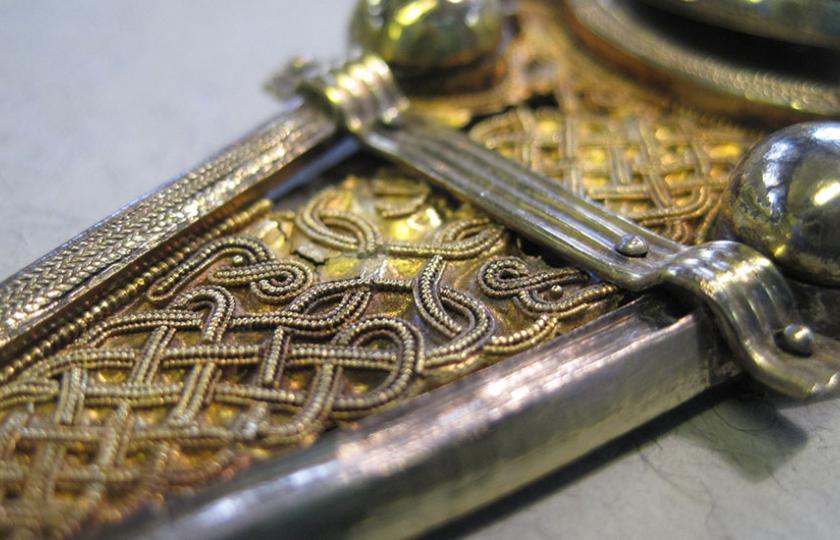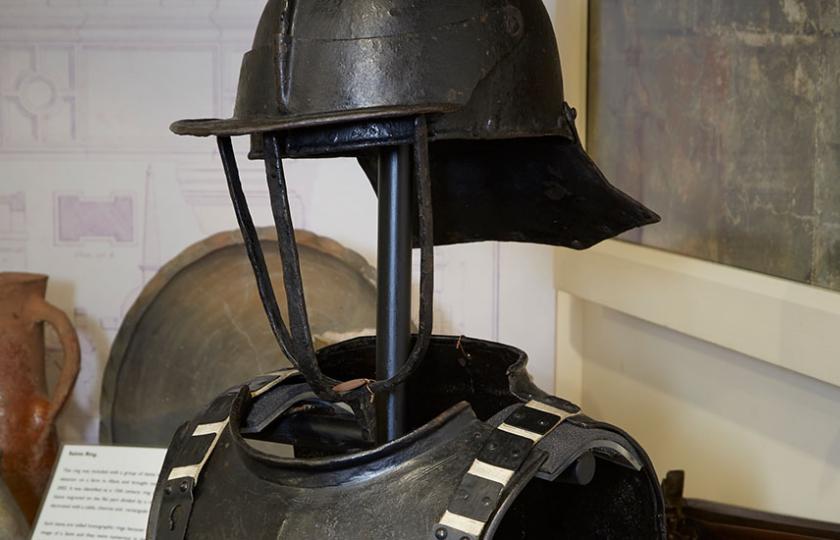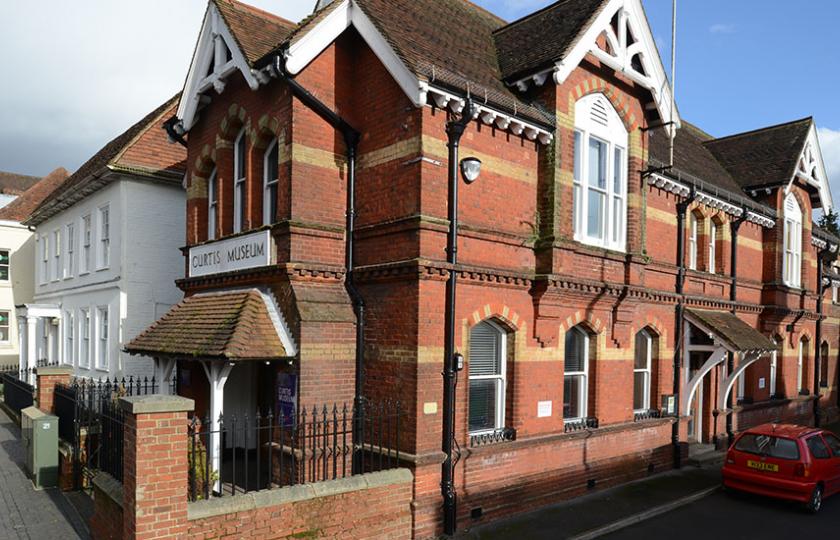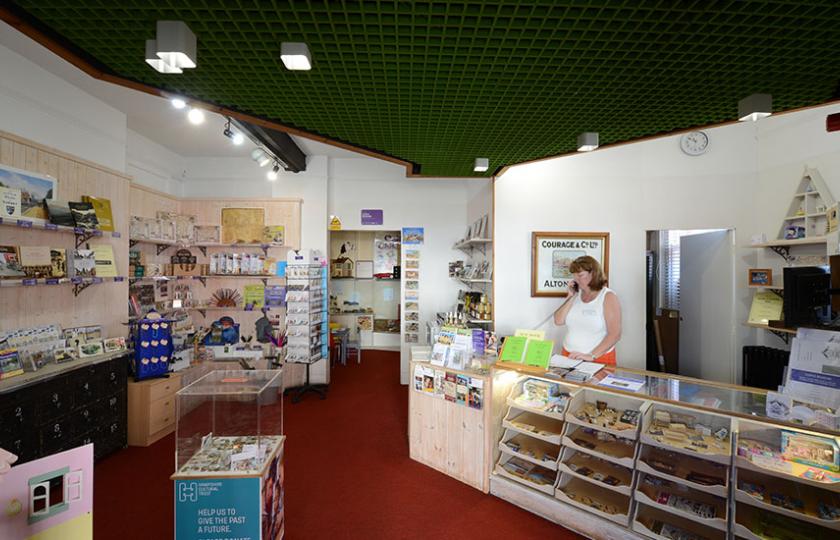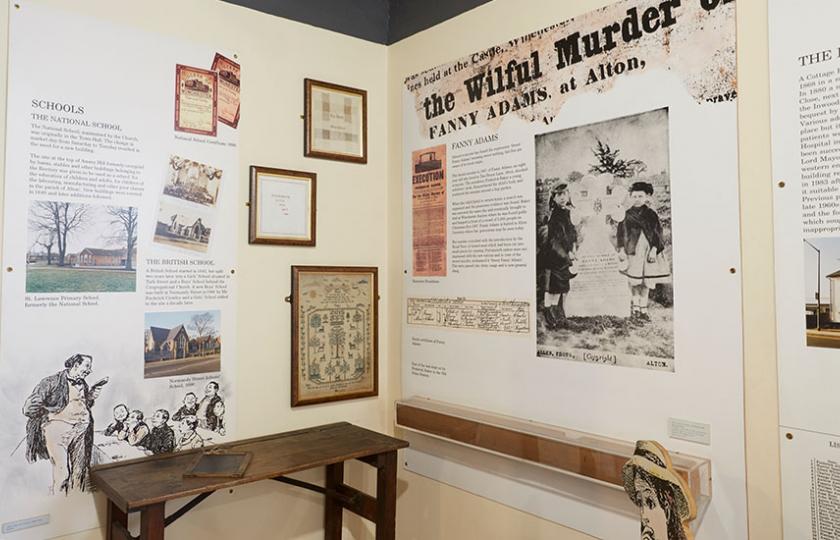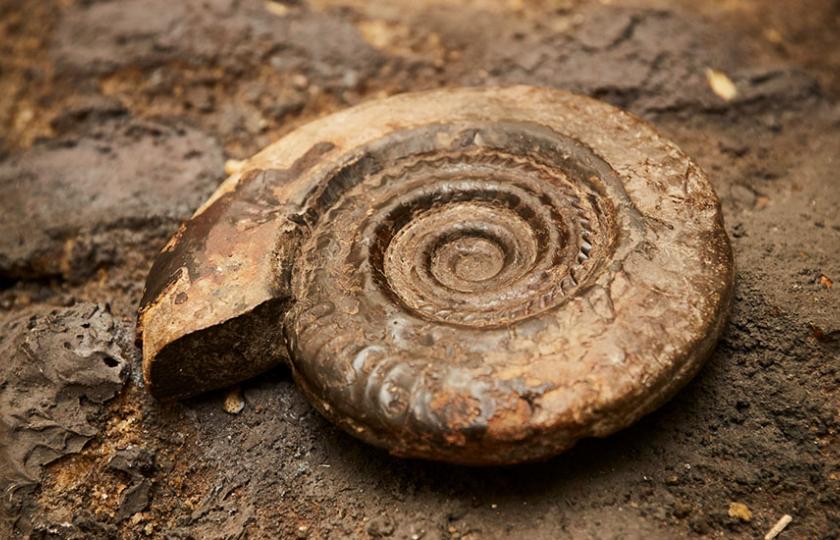The Curtis Museum in Alton is home to one of the finest local history collections in Hampshire, exploring 100 million years of the region’s past.
Permanent exhibitions include a rare Roman enamel cup, ancient Saxon burials, hop picking and brewing, Cranford author Elizabeth Gaskell, the 1643 Battle of Alton - with a Civil War era helmet, breastplate and sword - and the notorious tale of Sweet Fanny Adams. There’s also a regular programme of events, complete with family-friendly and educational activities. When you have finished your trip to the Curtis Museum, why not pay a visit to our sister venue in Alton, the Allen Gallery. As well as housing one of the south's most outstanding collections of ceramics, the gallery has a welcoming café and accessible toilet facilities.
Things to do
The museum is a great place for the whole family to enjoy. Here are just a few of the things you can do during your visit:
- View the Alton Buckle, the finest piece of Anglo-Saxon craftsmanship found in Hampshire
- Discover more about Alton and the surrounding area in our extensive local studies area
- Have fun with our children’s activities, including dressing-up costumes
- Browse the museum shop
History of the museum
The museum was founded by William Curtis (1803–1881) after he helped start the Alton Mechanics Institute in 1837, a society where he could share his interest in natural sciences with the men of the town. After creating a museum in the institute’s building in Market Street, Curtis helped raise money for the building that stands here today. Gradually the museum spread into every room, now housing, among other things, fossils that belonged to him.
Alton Buckle
This incredible find was discovered during the 1959–61 excavations of the Mount Pleasant Anglo-Saxon cemetery. It consists of a silver gilt body with filigree wires and niello inlay, set with Cloisonné garnets and glass. The centre panel design is gold filigree on a gold repoussé base. The buckle shows signs of considerable use and wear, the two silver gilt bars being ancient repairs. Buckles like this were used to fasten a belt worn around the waist or hips and were major items of male jewellery during the 6th and 7th centuries AD.
The buckle was found in the grave of an Anglo-Saxon warrior accompanied by a sword, shield boss, spear heads and numerous smaller items. It is the finest piece of Anglo-Saxon craftsmanship to have been found in Hampshire and is among the most beautiful and accomplished Anglo-Saxon pieces to have been found outside the famous Sutton Hoo burial in Suffolk.
William Curtis the Botanist
The botanist William Curtis (1746–1799) was born in nearby Lenten Street. From an early age he developed a passion for natural history. His biggest accomplishment came towards the end of his life when he first published Botanical Magazine, which still exists. You can learn more about his struggle for success at the museum.
Childhood gallery
This charming corner of the museum, where nostalgia abounds, is packed with toys and dolls dating from the 18th century through to the present day. The gallery includes games and a selection of jigsaw puzzles, displayed at an ideal height for younger visitors.
Local studies area
We have a wide variety of information on the history of Alton and the surrounding villages. The local studies area is ideal for private research, school projects or simply for general interest. Choose from a range of press cuttings, extracts from published articles and information on local families and buildings. There is also reference material, including copies of directories, sale catalogues, maps and billheads from traders. Parish records and census information are available to view digitally. The photographic collection includes books of local places of interest. You can find out more about Alton and the surrounding area on the Alton Papers website.
The Curtis Museum has level access to the ground floor only.
Assistance dogs are welcome, as long as they are clearly identifiable.
By car: the Curtis Museum is located near the centre of Alton. There is public pay and display parking nearby.
By rail: Alton railway station is within walking distance of the museum.
By bus: Alton is served by buses from surrounding major towns. All buses terminate at Alton railway station, which is a five minute walk from the museum.
The Curtis Museum has two exciting self-led programmes available for KS1 and KS2. Please read the information below on how to facilitate a self-led visit to the museum.
The packs contain activities which are linked to the KS1 and KS2 curriculum. They are designed to be used flexibly so that teachers and educators can pick activity stations which are most relevant or interesting for pupils.
To facilitate a self-led visit you will need to:
- Download the KS1 or KS2 trail pack (one per lead teacher/ adult helper). If you are bringing a whole class (34 max) it must be split into small groups of 6-7 across all the activity stations you wish to use. All groups must be accompanied by a teacher/adult helper at all times.
- Download the KS1 or KS2 activity documents (these will need to be printed off in advance).
- Download the Hazard Information Sheet *Essential Information which will help to plan your visit and inform your Risk Assessment.
- Please call the Curtis Museum volunteer team who will be able to check availability and confirm a time slot for you. Telephone: 01420 82802.
| Resource | Download |
|---|---|
| Trail Pack - KS1 | Download PDF |
| Trail Pack - KS2 | Download PDF |
| Activities - KS1 | Download PDF |
| Activities - KS2 | Download PDF |
| Hazard Sheet | Download PDF |
- 15th Century Saints Ring
- Alton and the Great War
- Alton Inns
- Alton Paper Mill
- Alton's Churches
- Commodore Augustus Agar VC
- Fire Brigade
- Hop Growing in the Alton Area
- Iron Age Stater Die
- Lest We Forget - Alton's War Memorial
- Letter Boxes
- Microfiche
- Pest Houses and Hospitals
- Police Station
- Post Office
- Street Names
- Street Numbering
- The Centre of the Universe
- The Coming of the Railways to Alton
- The Crimean War - Some Local Connections
- The Curtis Museum Story
- The Lord Mayor Treloar Hospital and College
- The Tempest
- The True Story of Sweet Fanny Adams
- Trade Tokens
- What Ever Happened to Alton's Spitfire
- William Curtis


